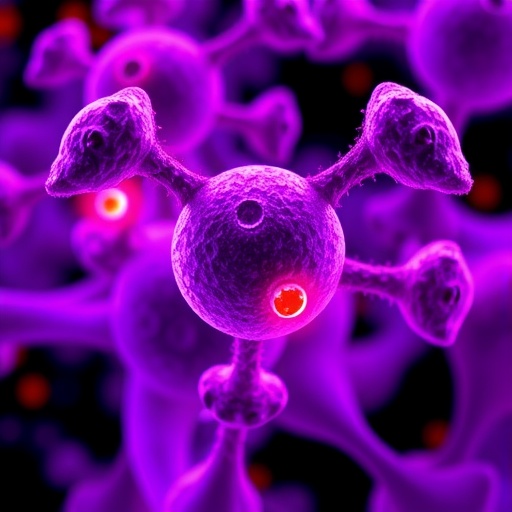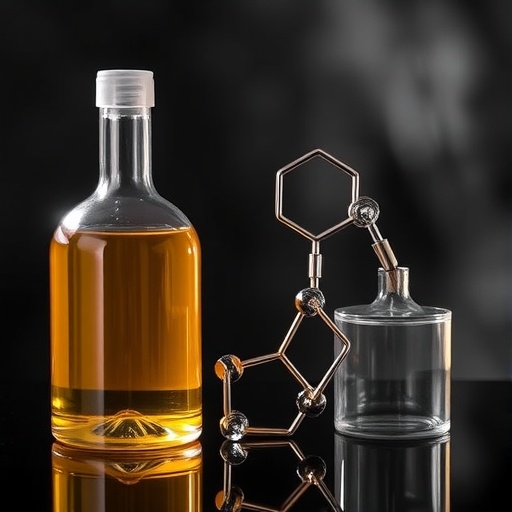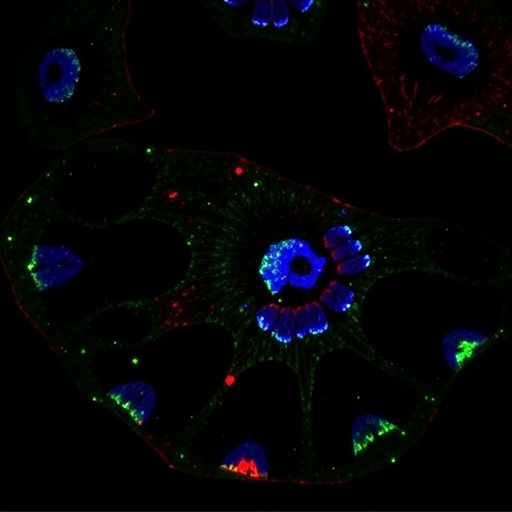Recent research has unveiled significant findings concerning the impact of lauric acid and levodopa on ovarian toxicity induced by manganese in Balb/c mice. This study, led by Idowu and colleagues, delves into the mechanisms of oxidative stress, inflammation, and steroidogenic pathways, exploring how these compounds can mitigate harmful effects that manganese exposure has on ovarian health. Manganese, an essential trace mineral, becomes hazardous at elevated levels, raising concerns as environmental and occupational exposures increase.
Ovarian toxicity manifests in various forms, including disrupted hormonal balance, impaired fertility, and potential long-term reproductive health issues. Manganese exposure has been linked to increased oxidative stress, leading to cell damage and dysfunction in reproductive tissues. The preliminary data suggests that manganese not only affects physiological reproductive functions but also disrupts the cellular environment within the ovaries, creating an urgent need for effective therapeutic strategies.
The researchers highlighted lauric acid’s unique properties, an uncommon fatty acid found in coconut oil and palm kernel oil, which possesses potent antioxidative characteristics. By eliminating free radicals and preventing cellular damage, lauric acid shows promise as a protective agent against the detrimental effects of oxidative stress. This aspect is critical as the survival of ovarian follicles hinges on maintaining a delicate balance of oxidative stress and antioxidant defenses.
On the other hand, levodopa—a well-known precursor to dopamine—historically used in treating Parkinson’s disease, is emerging as a potential player in reproductive health. Its neuroprotective effects are being studied not just for neurological applications but also for its antioxidative potential in other tissues, including the ovaries. The ability of levodopa to boost levels of critical hormonal mediators associated with fertility adds a novel dimension to this investigation.
The study employed a rigorous experimental design where Balb/c mice were subjected to manganese exposure to induce toxicity. Following this exposure, various treatment regimens including both lauric acid and levodopa were administered. The outcomes measured included ovarian weight, hormonal levels, and oxidative stress markers. The results were compelling—both lauric acid and levodopa significantly countered the adverse effects of manganese, showcasing their potential as therapeutic agents.
In particular, the attenuation of oxidative markers was notable. Animals treated with lauric acid had markedly reduced levels of malondialdehyde (MDA), a byproduct of lipid peroxidation that signals on-going oxidative damage. Similarly, levodopa treatment showcased a significant decrease in reactive oxygen species (ROS), therefore supporting its role as an oxidative stress mitigator.
Inflammation is another primary concern when it comes to manganese-induced toxicity. The study illuminated how both lauric acid and levodopa reduced inflammatory cytokines such as TNF-alpha and IL-6, crucial markers of systemic inflammation. By reducing these levels, the treatments not only alleviated toxicity but also fostered an environment conducive to normal ovarian function and fertility.
Moreover, steroidogenic pathways are particularly vital for reproductive health, playing a crucial role in the synthesis of sex hormones such as estrogen and progesterone. The study remarkably documented how both chemicals contributed to enhanced steroidogenesis in the ovaries exposed to manganese. This restoration of hormonal balance signals a major breakthrough in addressing manganese’s reproductive toxicity.
The implications of these findings extend beyond animal models, offering insights relevant to human health. Considering that manganese exposure can occur through various environmental and dietary channels, elucidating the protective effects of lauric acid and levodopa may allow for the development of novel therapeutic approaches. Further exploration into the translational potential of these findings could lead to dietary recommendations or supplements aimed at safeguarding reproductive health.
Antioxidant supplementation as a preventive strategy for protecting ovarian health could be particularly important for women in high-risk occupational settings, such as mining and heavy industry, where exposure to metals like manganese is prevalent. The findings could advocate for targeted dietary adjustments or supplementation with lauric acid, particularly for women seeking to conceive.
Importantly, future research must address the optimal dosage and long-term effects of lauric acid and levodopa treatments. While the study presents groundbreaking data, understanding the dynamics of these interventions in broader biological contexts remains essential. It opens the floor for exciting, subsequent studies examining not only reproductive outcomes but also potential multi-organ protective effects.
With reproductive health often overshadowed by other biological health issues, this research catalyzes important discussions about the impact of environmental toxicants and potential nutritional interventions. As the narrative surrounding women’s health evolves, harnessing the antioxidant power of naturally occurring compounds could usher in new paradigms in fertility preservation and reproductive health management.
In conclusion, the integration of lauric acid and levodopa as therapeutic agents against manganese-induced ovarian toxicity represents a significant advancement in understanding reproductive health. The amalgamation of antioxidative, anti-inflammatory, and steroidogenic benefits paves the way for innovative approaches to combatting age-old health issues plaguing women around the world.
Subject of Research: Manganese-induced ovarian toxicity and the protective effects of lauric acid and levodopa in Balb/c mice.
Article Title: Lauric acid and levodopa attenuate manganese-induced ovarian toxicity in balb/c mice via antioxidative, anti-inflammatory, and steroidogenic pathways.
Article References:
Idowu, O.K., Abdulgafar, M.E., Sogbesan, A.Z. et al. Lauric acid and levodopa attenuate manganese-induced ovarian toxicity in balb/c mice via antioxidative, anti-inflammatory, and steroidogenic pathways. J Ovarian Res 18, 233 (2025). https://doi.org/10.1186/s13048-025-01810-3
Image Credits: AI Generated
DOI: 10.1186/s13048-025-01810-3
Keywords: Manganese toxicity, lauric acid, levodopa, ovarian health, oxidative stress, reproductive health, Balb/c mice.
Tags: Balb/c mice research studycellular damage in reproductive tissuescoconut oil health benefitsenvironmental manganese exposure effectsfertility impairment mechanismshormonal balance disruptioninflammation and steroidogenic pathwayslauric acid antioxidant propertieslevodopa reproductive healthManganese ovarian toxicityoxidative stress in ovariestherapeutic strategies for ovarian health





